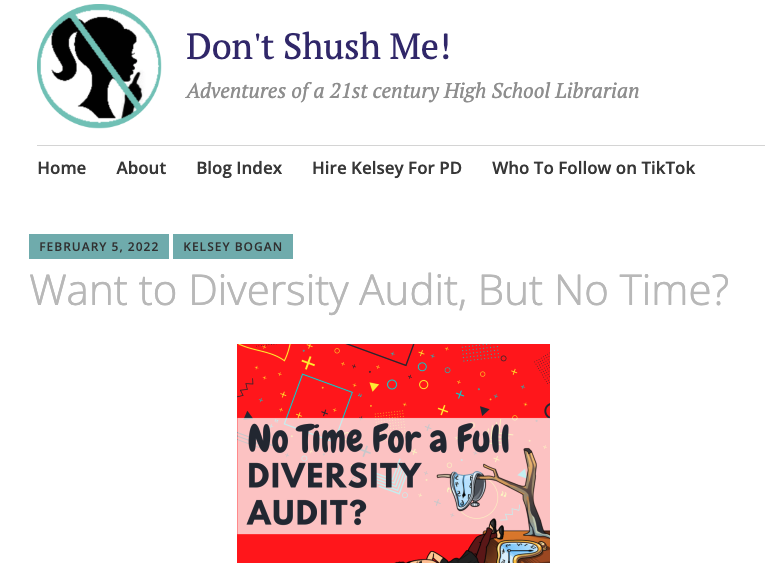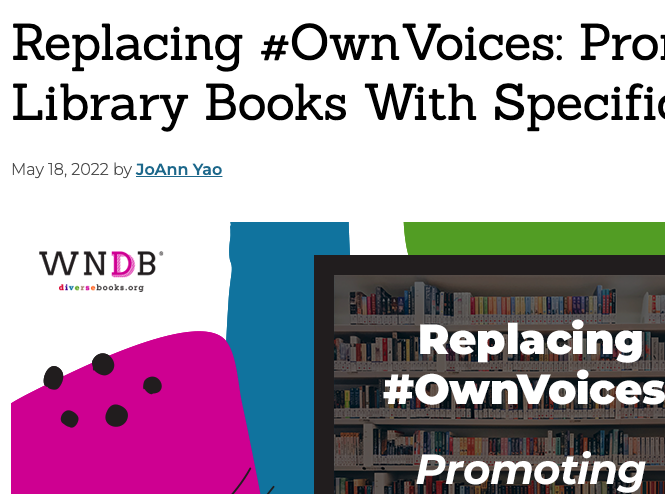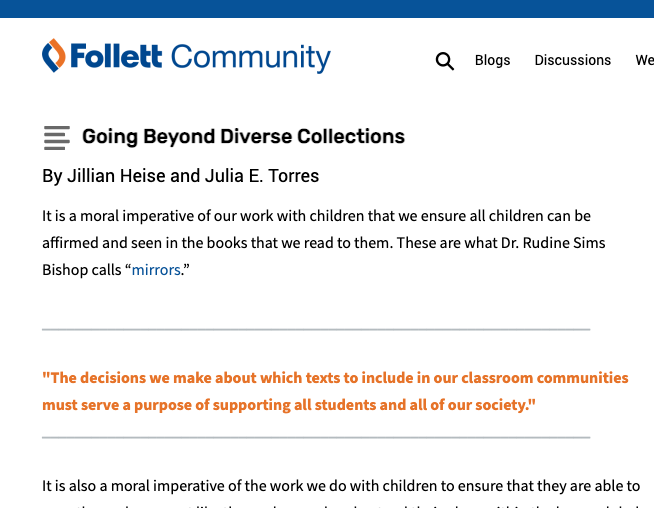The concept of “diverse books” has gained a lot of steam in recent years. While most librarians agree that having a diverse collection is a good thing, the process of actually creating an equitable and accessible collection may not be as obvious. How do we even begin to decide which diverse books to choose? With so many books and book lists available online, how do we know which ones we can trust?
Additionally, for some librarians, it’s not enough to receive lists of book recommendations from others. They may want to take a more active role in evaluating the books they choose for their library collection. Many of us want to truly understand why some books are better than others. We want to learn how to improve our ability to analyze the quality of diverse representations in books. If any of this sounds like you, or if you just want to learn more about diversity in children’s books, then read on for five resources that can help you create more accessible and equitable library collections.
1. Want to Diversity Audit, But No Time? – Kelsey Bogan

For many librarians, diversity audits feel like yet another insurmountable administrative task that we all know we should do, but we can’t always find the time to do it right. Reminding us of the adage that “perfect is the enemy is good,” librarian Kelsey Bogan outlines some smaller steps that librarians can take to begin the process of diversifying their library collection. By auditing new purchases or focusing on book lists and displays, librarians can develop their auditing skills without overwhelming themselves with the enormous task of tackling a full collection all at once. (Those who do have the time and resources to do a full audit can refer to the full guide.) Bogan also shares tips for making the most of diversity tag analysis tools offered by companies like Mackin and Follett.
2. Guide for Selecting Anti-Bias Children’s Books – Social Justice Books

This guide is actually one of several updated versions of a brochure that was originally published in 1980! In addition to this list by Louise Derman-Sparks, there is also a version from the University of Arizona’s World of Words and another from Teaching for Change. Obviously, the original pamphlet from the Council on Interracial Books for Children in New York must have had some pretty good ideas. From reviewing illustrations to considering the background of the author and/or illustrator, these guides provide helpful suggestions and examples for librarians who may be new to this kind of book analysis.
3. Replacing #OwnVoices: Promoting Diverse Library Books With Specificity – WNDB

Just as #OwnVoices was breaking into the mainstream (and was being discovered for the first time by many librarians), organizations like We Need Diverse Books (WNDB) decided to step away from using the term. Long story short, publishers and readers were misusing the idea of #OwnVoices to try and force writers to disclose aspects of their identities before they felt ready to do so– the most famous example being the forced outing of “Simon Vs.” author Becky Albertalli. There are several librarians who are trying to follow the example set by WNDB, and they are finding other ways to talk about diverse books. Gianna Macchia’s piece for WNDB interviews four librarians on how they’ve shifted their practice away from the concept of #OwnVoices and toward more specificity.
4. Where to Find Diverse Books – We Need Diverse Books

Following WNDB’s suggestion of choosing specificity over the vagueness of #OwnVoices, librarians should seek out a variety of potential sources for book reviews. A librarian who is evaluating a book featuring Latinx characters will want to see what sites like Latinxs in Kid Lit and Vamos a Leer have to say about the book. Individual opinions of a book will, of course, vary from reviewer to reviewer. But by looking for information from culturally-specific websites like these, librarians may be able to spot harmful stereotypes and inaccurate representations that mainstream review sites might have missed. The sites and blogs listed on this WNDB webpage can be great resources for learning how to see a book from someone else’s perspective.
5. Going Beyond Diverse Collections – Follett

Finally, librarians can learn how to go beyond diverse books and start their journey toward learning to recognize the patterns of representation that appear in children’s books. Librarians Julia E. Torres and Jillian Heise offer links to several good resources in this blog post, including a recording of a webinar that they did for Follett on the topic of “Using Inclusive Books to Build Community.” Ultimately, Torres and Heise encourage librarians to make a lifelong commitment to “asking questions, building connections, and being intentional in our text selections,” all of which will definitely help us make our library collections more accessible and equitable.
The idea of analyzing and diversifying a library collection can certainly be daunting, but you don’t have to do it alone! By reaching out to other librarians, working alongside students and community members, and being open to learning new ways of seeing the world, librarians can take some important first steps toward building an even greater library collection– one that authentically and respectfully serves and represents everyone.

